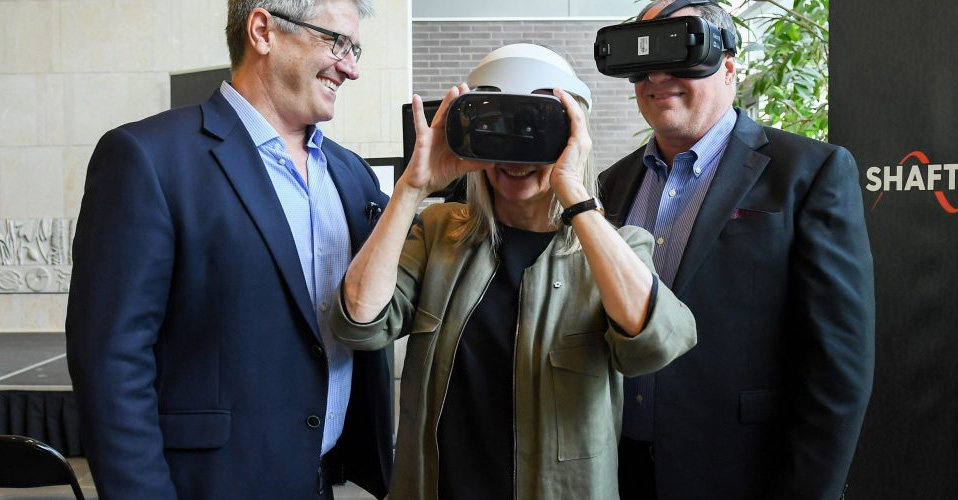Photograph by Sam Santos for George Pimentel Photography / Courtesy of Shaftesbury
Dr. Chang presented on research that is testing the impact of an original virtual reality game on reducing anxiety in children who are undergoing day surgery for the first time, at a press conference in June. This work is in association with Shaftesbury, Holland Bloorview Kids Rehabilitation Hospital, and Ryerson University. Read the media release.
Dr. Michael B. Chang, Otolaryngologist
Researchers and physicians are working to find new, innovative ways to use virtual reality (VR) to improve patient care. In fact, here at Scarborough Health Network (SHN), we’ve partnered with Canada’s largest private media production company, Shaftesbury, to test the impact of an original VR game on reducing anxiety in children from six to 12 who are undergoing day-surgery for the first time.
At SHN, we view anxiety as a symptom to be taken seriously and managed with evidence-based treatment and procedures. In children, anxiety related to hospital experiences can contribute to resistance to treatment, nightmares, longer recovery periods, lowered pain thresholds, and separation anxiety.
This work is building on SHN’s well-established practices to help paediatric patients and their families through pre- and post-operative care, including tours of the operating rooms, and the “Till I Sleep program – where parents join their children in the operating room until their anesthesia kicks in.
Taking place at Centenary, where we currently complete a high volume of paediatric surgeries, the trial is focused on positive distraction therapy for perioperative stress relief with a test group of 120 children.
Participants are assigned to play the virtual reality game “Bubble Bloom” (an under-the-sea experience where users can blow bubbles at passing fish and look for other sea creatures swimming around them) or to engage in regular playtime activities such as playing with toys and electronics, before surgery. Participants complete questionnaires that measure their anxiety and experience with the game and the study, before and after their play experience.
We assess participants’ change in anxiety through the short State-Trait Anxiety Inventory (STAI), which was developed and validated in 1992 by Marteau and Bekker. It is a six-item version of the original 40-question STAI, and is easier for children to complete. We interview participants about their experience with the VR game, the equipment, the process of set-up and take-down, and how participants felt in regards to their anxiety, and code their responses for analysis. This helps us understand whether positive distraction therapy through virtual reality games will be a feasible option for our patients and their families in the future.
The study has two phases. Phase 1 is a pilot for the trial and assesses the patients’ experience with the intervention and product itself. Preliminary results are promising, and our patients and their families have responded positively to the opportunity to participate in the study. Phase 2 – a randomized control trial to assess whether this intervention can reduce anxiety in our pediatric day surgery patients – is underway.
As we move forward with Phase 2, which we anticipate completing by December, we are particularly interested in exploring how this innovative approach affects children’s anxiety before surgery, and how it contributes to creating positive health outcomes and hospital experiences for our young patients and their families.
This partnership is a shining example of how we improve our patients’ lives through exceptional care, while living our values of innovation and compassion at SHN. Research coordinator Alicia Fernandes, Child Life Specialist Alexandra Frankel, and our entire research team are very excited about the possibilities for this research, as we consider how best to treat anxiety in our paediatric patients.
And, I’m personally delighted to be a part of this pioneering research that is helping transform some of our youngest patients’ experiences before they go into the operating room.

